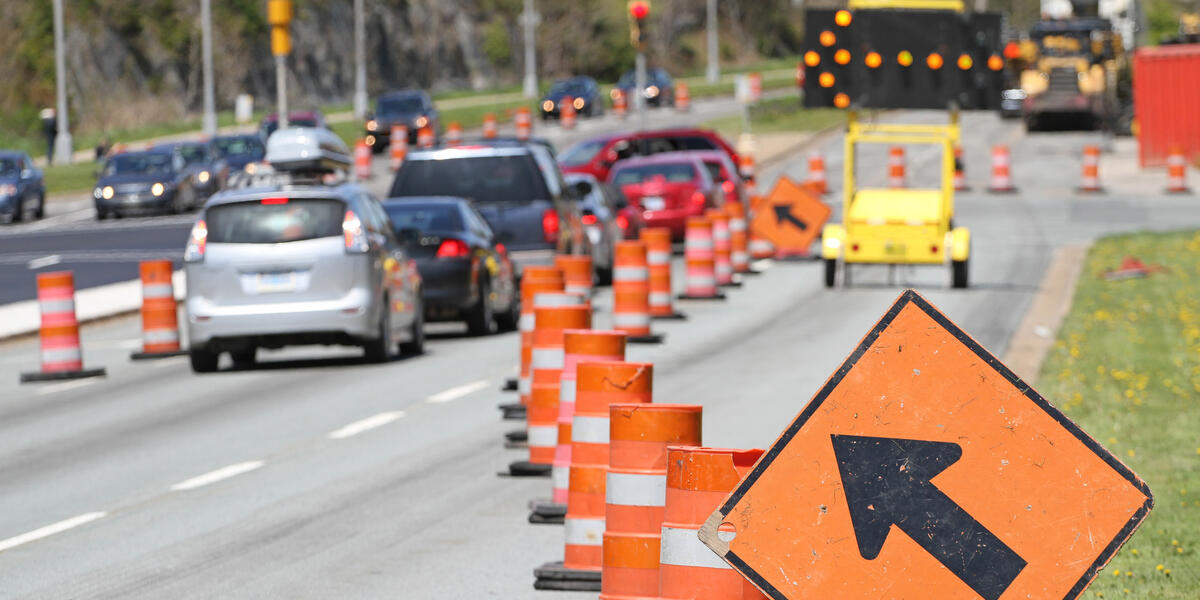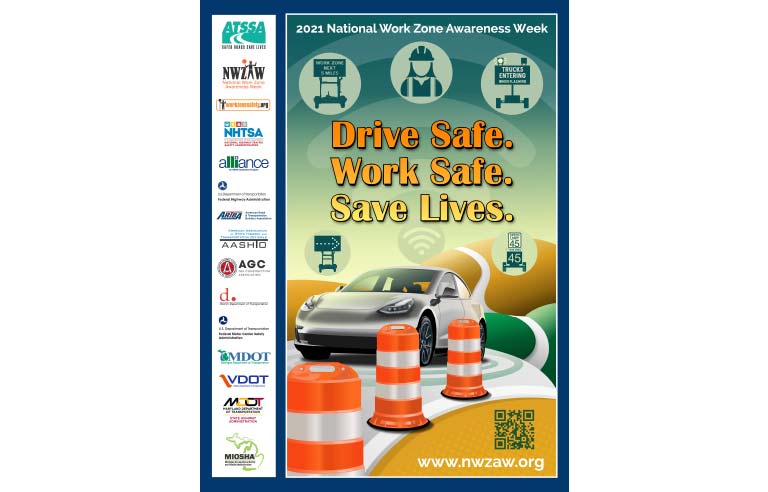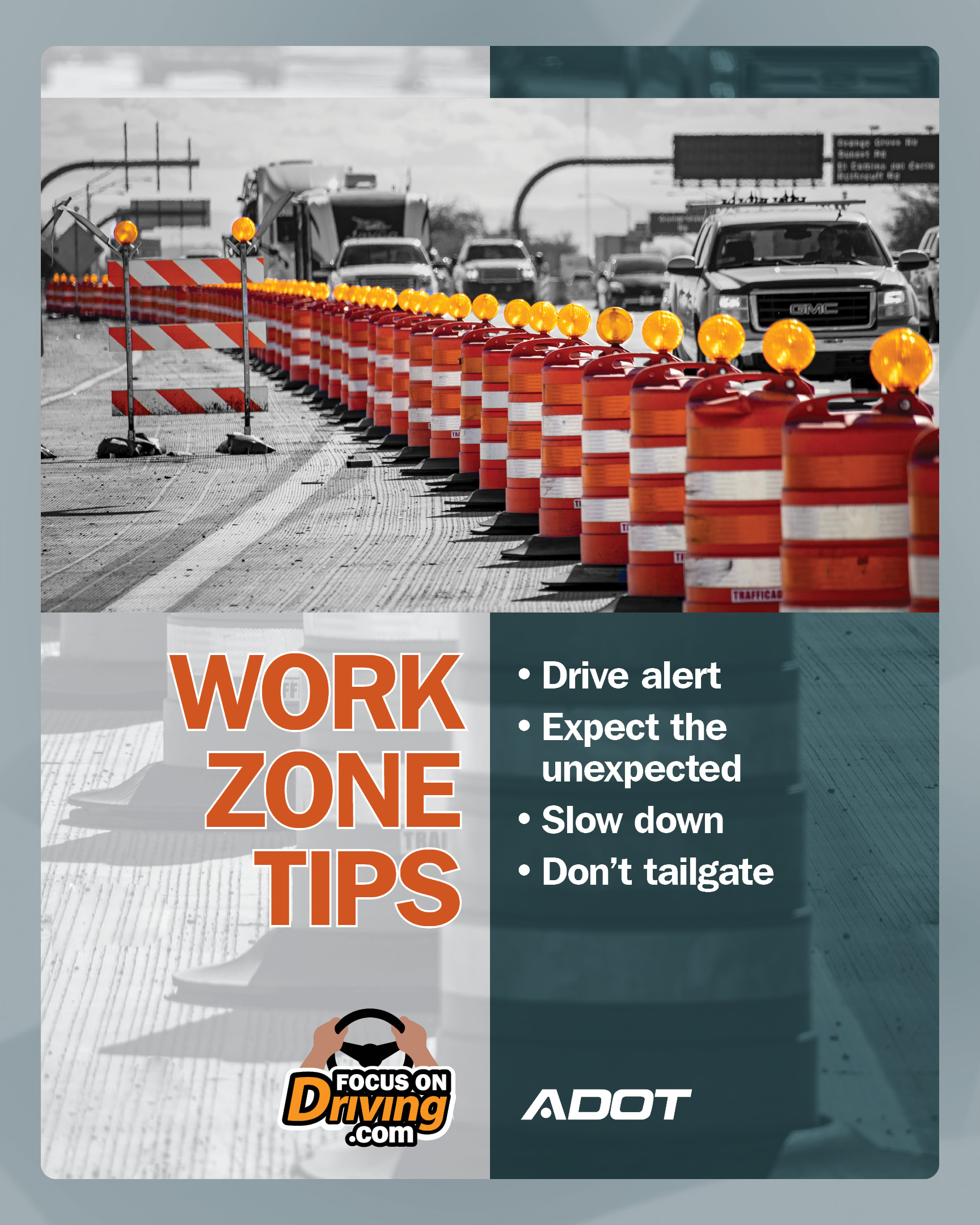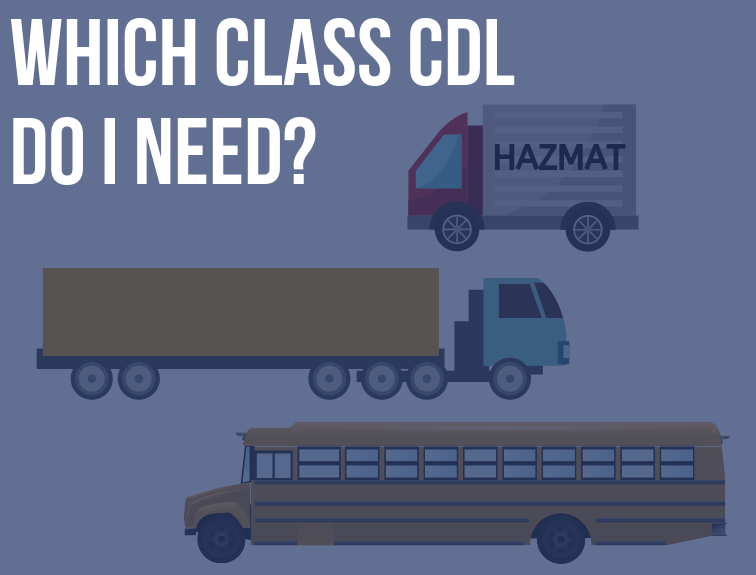National Work Zone Awareness Week April 11-15th
It is that time of the year when our drivers will be confronted with work zones. Every year, about 600 people are killed in roadway work zones. In an average year, about 90 workers are killed in work zones: most of these due to a vehicle entering a marked-off area of construction. It is vital for drivers to eliminate as many distractions as possible as they approach and drive through work zones.
National Work Zone Awareness Week (NWZAW) is an annual spring campaign held at the start of construction season to encourage safe driving through highway work zones and construction sites. The key message is for drivers to use extra caution in work zones. For more information, check out the links:http://www.nwzaw.org; https://www.fmcsa.dot.gov/ourroads/work-zones-safety-tips
10 Tips for Driving Safely in Work Zones
- EXPECT THE UNEXPECTED! (Normal speed limits may be reduced, traffic lanes may be changed, and people may be working on or near the road.)
- SLOW DOWN! (Speeding is one of the major causes of work zone crashes.)
- DON'T TAILGATE! KEEP A SAFE DISTANCE BETWEEN YOU AND THE CAR AHEAD OF YOU. (The most common crash in a highway work zone is the rear-end collision. So, don't tailgate.)
- KEEP A SAFE DISTANCE BETWEEN YOUR VEHICLE AND THE CONSTRUCTION WORKERS AND THEIR EQUIPMENT.
- PAY ATTENTION TO THE SIGNS! (The warning signs are there to help you and other drivers move safely through the work zone. Observe the posted signs until you see the one that says you've left the work zone.)
- OBEY ROAD CREW FLAGGERS! (The flagger knows what is best for moving traffic safely in the work zone. A flagger has the same authority as a regulatory sign, so you can be cited for disobeying his or her directions.)
- STAY ALERT AND MINIMIZE DISTRACTIONS! (Dedicate your full attention to the roadway and avoid changing radio stations or using cell phones while driving in a work zone.
- KEEP UP WITH THE TRAFFIC FLOW. (Motorists can help maintain traffic flow and posted speeds by merging as soon as possible. Don't drive right up to the lane closure and then try barge in.)
- SCHEDULE ENOUGH TIME TO DRIVE SAFELY AND CHECK RADIO, TV, AND WEBSITES FOR TRAFFIC INFORMATION. (Expect delays and leave early so you can reach your destination on time.
- BE PATIENT AND STAY CALM. (Work zones aren't there to personally inconvenience you. Remember, the work zone crew members are working to improve the road and make your future drive better.)
- Most States have a 511 Road condition app that you can download to your smart device
Speeding to be the focus of 2022 Operation Safe Driver Week July 10th-16th
This year’s Operation Safe Driver Week targeting unsafe driving behaviors is scheduled for July 10-16, the Commercial Vehicle Safety Alliance announced Tuesday.
Law enforcement personnel in the U.S., Canada and Mexico will be on roadways throughout that week issuing warnings and citations to commercial and passenger vehicle drivers engaging in unsafe driving behaviors, such as speeding, distracted driving, following too closely, improper lane change, drunk or drugged driving, etc.
Earlier this month, the U.S. Department of Transportation’s National Highway Traffic Safety Administration released its latest annual traffic crash report, showing that 38,824 lives were lost in traffic crashes nationwide in 2020 – the highest number of fatalities since 2007. And while the number of crashes and traffic injuries declined overall, fatal crashes increased by 6.8%.
Due to speed-relating fatalities increasing by 17% in 2020, according to NHTSA’s data, law enforcement officers will be keying in on identifying and targeting speeding during Operation Safe Driver Week.
The Operation Safe Driver Program was created to improve the driving behaviors of all drivers and reduce the number of crashes involving commercial motor vehicles on roadways through educational and traffic enforcement strategies. Operation Safe Driver Week was created by CVSA with support from federal agencies in Canada, Mexico and the U.S., the motor carrier industry, and transportation safety organizations.
Do you need a commercial driver’s license (CDL) to operate a straight truck with less than 26,001 pounds GVWR with air brakes?
This is a question that I receive a lot during the seminars and from our lease and rental managers. The definition of a Commercial Motor Vehicle for the purpose of requiring a CDL as described in CFR 383.5 is as follows:
Commercial motor vehicle (CMV) means a motor vehicle or a combination of motor vehicles used in commerce to transport passengers or property if the motor vehicle-
- Has a gross combination weight rating of 11,794 kilograms or more (26,001 pounds or more) inclusive of the towed unit(s) with a gross weight rating of more than 4,536 kilograms (10,000 pounds)
- Has a gross vehicle weight rating of 11,794 or more kilograms (26,001 pounds or more)
- Is designed to transport 16 or more passengers, including the driver.
- Is of any size and is used in the transportation of hazardous materials as defined in CFR 383.5
So the answer is NO. However, your state may require a chauffeur’s license for a vehicle with a GVWR of 10,000 pounds or more and less than 26,001 pounds, i.e.; Michigan and Illinois.
Also, keep in mind that there is no such thing as an air brake endorsement!!! In reference to a Class A or B CDL, there is an air brake restriction only. This means that the license holder either failed the air brake section of their CDL examination or they used a CMV without air brakes for their skills test.











